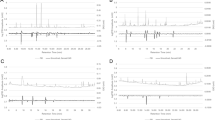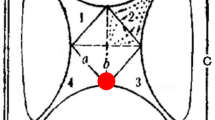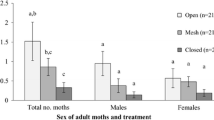Abstract
Green leaf volatiles (GLVs) function as host attractants, pheromone synergists, or sexual kairomones for a number of coleopteran folivores. Hence, we focused on host GLVs to determine if they were attractive to adults of the emerald ash borer, Agrilus planipennis (Coleoptera: Buprestidae), which feeds on ash (Fraxinus) foliage. Eight GLVs were identified by chromatography-electroantennogram (GC) and GC-mass spectrometry in foliar headspace volatiles collected in traps containing Super-Q from white ash, Fraxinus americana, and green ash, Fraxinus pennsylvanica, trees. GLVs in the aeration extracts elicited antennal responses from both male and female adults in gas chromatography-electroantennogram detection bioassays. Male antennae were more responsive than female antennae and showed the strongest response to (Z)-3-hexenol. Six field experiments were conducted in Canada and the USA from 2004 to 2006 to evaluate the attractiveness of candidate GLVs, in various lure combinations and dosages. Field experiments demonstrated that lures containing (Z)-3-hexenol were the most effective in increasing trap catch when placed on purple traps in open areas or along the edges of woodlots containing ash. Lures with (Z)-3-hexenol were more attractive to males than females, and dosage may be a factor determining its effectiveness.


Similar content being viewed by others
References
Box, G. E. P., and Cox, D. R. 1964. An analysis of transformations. J. Royal Stat. Soc. 26:211–243.
Canadian Food Inspection Agency. 2007. Emerald ash borer—Agrilus planipennis. http://www.inspection.gc.ca/english/plaveg/pestrava/agrpla/tech/agrplae.shtml
Chinese Academy of ScienceS, Institute of Zoology 1986. Agrilus marcopoli Obenberger, p. 445. China Agriculture, Beijing.
Cossé, A. A., Bartlet, R. J., Zilkowski, B. W., Bean, D. W., and Andress, E. R. 2006. Behaviorally active green leaf volatiles for monitoring the leaf beetle, Diorhabda elongata, a biocontrol agent of saltcedar, Tamarix spp. J. Chem. Ecol. 32:2695–2708.
Crook, D. J., Khrimian, A., Fraser, I., Francese, J.A., Poland, T.M., and Mastro, V.C. 2008. Electrophysiological and behavioral responses of Agrilus planipennis (Coleoptera: Buprestidae) to host bark volatiles. Environ. Entomol. 37:356–365.
De Groot, P., Biggs, W. D., Lyons, D. B., Scarr, T., Czwerwinski, E., Evans, H. J., Ingram, W., and Marchant, K. 2006. A visual guide to detecting emerald ash borer damage. Natural Resources Canada and Ontario Ministry of Natural Resources, Sault Ste. Marie, Ontario, Canada.
Dickens, J. C. 2000. Orientation of Colorado potato beetle to natural and synthetic blends of volatiles emitted by potato plants. Agric. For. Entomol. 2:167–172.
Dickens, J. C., Jang, E. B., Light, D. M., and Alford, A. R. 1990. Enhancement of insect pheromone response by green leaf volatiles. Naturwissenschaften. 77:29–31.
EAB Info. 2007. Emerald Ash Borer. http://www.emeraldashborer.info/index.cfm
Fernandez, P. C., Meiners, T., BjÖrkman, C., and Hilker, M. 2007. Electrophysiological responses of the blue willow leaf beetle, Phratora vulgatissima, to volatiles of different Salix viminalis genotypes. Entomol. Exp. Appl. 125:157–164.
Francese, J. A., Mastro, V. C., Oliver, J. B., Lance, D. R., and Youssef, N. 2005. Evaluation of colors for trapping Agrilus planipennis (Coleoptera: Buprestidae). J. Entomol. Sci. 40:93–95.
Grant, G. G., Guo, J., MacDonald, L., and Coppens, M. D. 2007. Oviposition response of spruce budworm (Lepidoptera: Tortricidae) to host terpenes and nonhost green leaf volatiles. Can. Entomol. 139:564–575.
Haack, R. A., Jendek, E., Lui, H., Marchant, K. R., Petrice, T. R., Poland, T. M., and Ye, H. 2002. The emerald ash borer: a new exotic pest in North America. Newsl. Mich. Entomol. Soc. 47:3&41–5.
Hansson, B. S., Larsson, M. C., and Leal, W. S. 1999. Green leaf volatile-detecting olfactory receptor neurons display very high sensitivity and specificity in a scarab beetle. Physiol. Entomol. 24:121–126.
Larsson, M. C., Leal, W. S., and Hansson, B. S. 2001. Olfactory receptor neurons detecting plant odors and male volatiles in Anomala cuprea beetles (Coleoptera: Scarabaeidae). J. Insect Physiol. 47:1065–1076.
Lelito, J. P., Fraser, I., Mastro, V. C., Tumlinson, J. H., Böröczky, K., and Baker, T. C. 2007. Visually mediated ‘paratrooper copulations’ in the mating behavior of Agrilus planipennis (Coleoptera: Buprestidae), a highly destructive invasive pest of North American ash trees. J. Insect Behav. 20:537–552.
Lyons, D. B., and Jones, G. C. 2005. The biology and phenology of the emerald ash borer, pp 62–63, in K. W. Gottschalk (ed.) Proceedings, 16th U.S. Department of Agriculture interagency research forum on gypsy moth and other invasive species 2005; January 18–21, Annapolis, MD. Gen. Tech. Rep. NE-337.
Lyons, D. B., Caister, C., de Groot, P., Hamilton, B., Marchant, K., Scarr, T., and Turgeon, J. 2007. Survey guide for detection of emerald ash borer. Government of Canada, Sault Ste. Marie, Ontario, Canada.
McCullough, D. G., Poland, T. M., and Cappaert, D. L. 2006. Attraction of emerald ash borer to trap trees: effects of stress agents and trap height, pp. 61–62, in V. Mastro, R. Reardon, and G. Parra (Comp.) Emerald Ash Borer Research Technology Development Meeting, Pittsburgh, Pennsylvania, 26–27 September 2006. USDA Forest Service, FHTET-2005–16.
Montgomery, D. C. 2004. Design and Analysis of Experiments. 6th edn.Wiley, New Jersey.
Mize, C. W., and Schultz, R. C. 1985. Comparing treatment means correctly and appropriately. Can. J. For. Res. 15:1142–1148.
Otis, G. W., Youngs, M. E., and Umphrey, G. 2005. Effects of colored objects and purple background on emerald ash borer trapping, pp. 31–32, in V. Mastro and R. Reardon (Comp.). Emerald Ash Borer Research and Technology Development Meeting. 4–6 October 2004. Romulus Michigan, 30 September–1 October 2003. USDA Forest Service, FHTET-2004–15.
Poland, T. M. 2007. Twenty million ash trees later: current status of emerald ash borer in Michigan. Newsl. Mich. Entomol. Soc. 52:1&210–14.
Poland, T. M., de Groot, P., Grant, G., MacDonald, L., and McCullough, D.G. 2004. Developing attractants and trapping techniques for the emerald ash borer, pp. 15–16, in V. Mastro and R. Reardon (Comp.). Emerald Ash Borer Research and Technology Development Meeting. 30 September–1 October 2003. Port Huron, Michigan. USDA Forest Service, FHTET-2004–02.
Poland, T. M., Rodriguez-Saona, C., Grant, G., Buchan, L., De Groot, P., Miller, J., and McCullough, D. G. 2006. Trapping and detection of emerald ash borer: Identification of stress-induced volatiles and tests of attraction in the lab and field, pp. 64–65, in V. Mastro, R. Reardon, and G. Parra (Comp.). Emerald Ash Borer Research Technology Development Meeting, Pittsburgh, Pennsylvania, 26–27 September 2005. USDA Forest Service, FHTET-2005–16.
Poland, T. M., Crook, D., Francese, J., Oliver, J., Otis, G., de Groot, P., Grant, G., MacDonald, L., McCullough, D., Fraser, I., Lance, D., Mastro, V., Youssef, N., Turk, T., and Youngs, M. 2007. Towards the development of survey trapping technology for the emerald ash borer, pp. 4–5, in K.W. Gottschalk (ed.). Proceedings 17th U.S. Department of Agriculture Interagency Research Forum on Gypsy Moth and Other Invasive Species, 2006, Annapolis, Maryland, 10–13 January 2006. USDA Forest Service, Gen. Tech. Report NRS-P-10.
Reinecke, A., Ruther, J., Mayer, C. J., and Hilker, M. 2006. Optimized trap lure for male Melolontha cockchafers. J. Appl. Entomol. 130:171–176.
Reinecke, A., Ruther, J., Tolasch, T., Francke, W., and Hilker, M. 2002. Alcoholism in cockchafers: orientation of male Melolontha melolontha towards green leaf alcohols. Naturwissenschaften 89:265–269.
Rodriguez-Saona, C., Poland, T. M., Miller, J. R., Stelinski, L. L., Grant, G. G., de Groot, P., Buchan, L., and MacDonald, L. 2006. Behavioral and electrophysiological responses of the emerald ash borer, Agrilus planipennis, to induced plant volatiles of Manchurian ash, Fraxinus mandshurica. Chemoecology 16:75–86.
Ruther, J. 2004. Male-biased response of garden chafer, Phyllopertha horticola, to leaf alcohol and attraction of both sexes to floral plant volatiles. Chemoecology 14:187–192.
Ruther, J., Reinecke, A., Thiemann, K., Tolasch, T., Francke, W., and Hilker, M. 2000. Mate finding in the forest cockchafer, Melolontha hippocastani, mediated by volatiles from plants and females. Physiol. Entomol. 25:172–179.
Ruther, J., Reinecke, A., and Hilker, M. 2002. Plant volatiles in the sexual communication of Melolontha hippocastani: response toward time dependent bouquets and novel function of (Z)-3-hexen-1-ol as a sexual kairomone. Ecol. Entomol. 27:76–83.
SAS Institute Inc. 2004. SAS OnlineDocÒ 9.1.3. Cary, NC: SAS Institute Inc.
Siegert, N. W., McCullough, D. G., and Tluczek, A. R. 2007. Two years under the bark: towards understanding multiple-year development of emerald ash borer, pp. 20, in V. Mastro, D. Lance, R. Reardon and G. Parra (Comp.). Emerald Ash Borer and Asian Longhorned Beetle Research Technology Development Meeting, 29 October-2 November 2006. USDA Forest Service, FHTET-2007–04.
Steel, R. G. D., and Torrie, J. H. 1980. Principles and procedures of statistics. McGraw-Hill, New York.
United States Department of Agriculture, Animal and Plant Health Inspection Service. 2007. Emerald Ash Borer http://www.aphis.usda.gov/plant_health/plant_pest_info/emerald_ash_b/background.shtml
Warren, W. G. 1986. On the presentation of statistical analyses: reason or ritual. Can. J. For. Res. 16:1185–1191.
Yu, C. -M. 1992. Agrilus macropoli Obenberger (Coleoptera: Buprestidae), pp. 400–401, in G.-R. Xiao (ed.). Forest Insects of China2nd edn.China Forestry, Beijing.
Zhang, Q. -H., and Schlyter, F. 2004. Olfactory recognition and behavioral avoidance of angiosperm nonhost volatiles by conifer-inhabiting bark beetles. Agric. For. Entomol. 6:1–19.
Acknowledgements
We thank Gene Jones and Pat Roden for rearing beetles in quarantine for the GC-EAD study, and Dorothy Ambeault, Tim Dalseg, Laura Chouinard, Jordana Fera, Tasha Gauthier, Erin Clark, Tina Kuhn, and Toby Petrice for assistance with the field studies. We appreciate the assistance of Vic Mastro and Joseph Francese, USDA-APHIS, in providing the traps for our 2005 studies. Funding and support were provided by the Canadian Forest Service, Ontario Ministry of Natural Resources, and the USDA Forest Service Special Technology Development Program (Project No. NA-2003-02).
Author information
Authors and Affiliations
Corresponding author
Rights and permissions
About this article
Cite this article
de Groot, P., Grant, G.G., Poland, T.M. et al. Electrophysiological Response and Attraction of Emerald Ash Borer to Green Leaf Volatiles (GLVs) Emitted by Host Foliage. J Chem Ecol 34, 1170–1179 (2008). https://doi.org/10.1007/s10886-008-9514-3
Received:
Revised:
Accepted:
Published:
Issue Date:
DOI: https://doi.org/10.1007/s10886-008-9514-3




